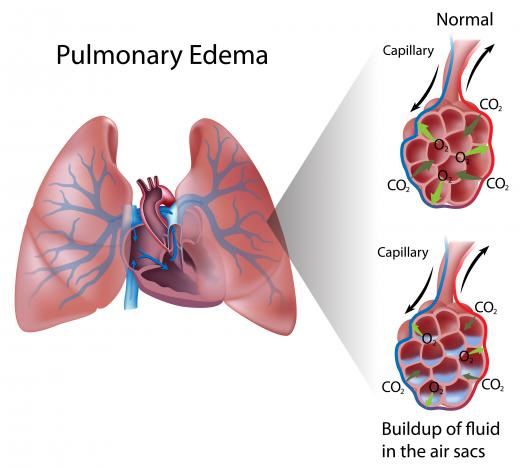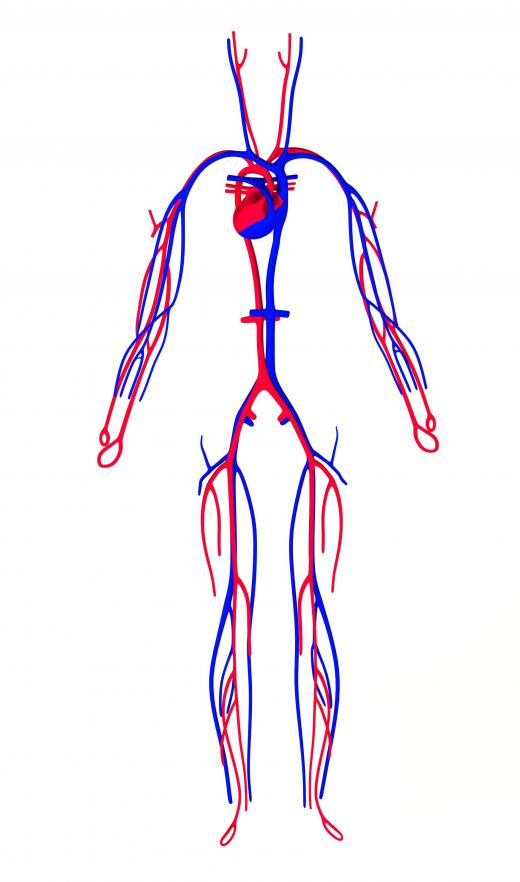What is Oncotic Pressure?
 Mary McMahon
Mary McMahon
Oncotic pressure is a form of pressure in the circulatory system which encourages water to cross the barrier of the capillaries and enter the circulatory system. In patients with low oncotic pressure, fluid will tend to accumulate in the tissues, resulting in edema. This phenomenon is part of a complex interconnected system which is designed to keep the body in a state of homeostasis, working together with hydrostatic pressure to keep the level of fluids in the blood stable.
The walls of the circulatory system are semi-permeable. Fluids can pass across these membranes, but larger materials such as proteins, also known as colloids, cannot. Hydrostatic pressure is the force which pushes fluids over this membrane and out of the circulatory system, while oncotic pressure is the force which brings fluids back into the circulatory system. When these two forces are in balance, there is no net loss or gain of fluid from the circulatory system. When they are not, a patient can develop medical problems.

Oncotic pressure occurs as a result of osmosis. When fluids move across the membrane of the capillaries due to hydrostatic pressure, they leave behind a concentration of solutes which were too big to cross the membrane. Fluids tend to flow from areas of low concentration to areas of high concentration, which means that when the solute level rises as fluid leaves the capillaries, fluids are pulled across the membrane and into the capillaries to balance the concentration of the solution on both sides of the barrier.

Sometimes, oncotic pressure may be referred to as colloid osmosis or colloid osmotic pressure, referencing the process and solutes involved. A number of things can influence oncotic pressure, including the amount of colloids in the blood. People with imbalanced concentrations of colloids in their blood may be at risk of low oncotic pressure. Individuals suffering from dehydration or an excess of fluids can also develop imbalances in their oncotic pressure as their bodies cannot compensate quickly enough.

Several equations involve oncotic pressure, and there can be medical situations in which it is useful to understand this phenomenon. Doctors and nurses generally learn about oncotic pressure, among a wide variety of other topics, in coursework which covers basic anatomy and physiology, and their studies may include familiarization with equations which involve the various forces which keep the circulatory system flowing evenly and maintain the balance of fluids in the body.
AS FEATURED ON:
AS FEATURED ON:













Discussion Comments
Great explanation. Thank you.
This helped me a lot! Thank you!
The terms hydrostatic and oncotic pressure are new to me. The only pressure I had ever heard of concerining the human body, is blood pressure. Everyone is always talking about having high blood pressure these days.
All three have to do with the circulatory system though, which makes me wonder if blood pressure is related in some way to the other two.
Post your comments